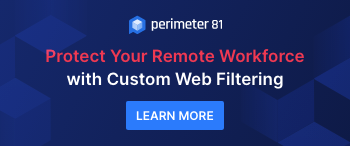Where’s The Money in Data?
There is little argument that there is value in data. In fact, when asked, many executives would say their data is one of their organization’s most valuable assets. Yet, as we progress further in to the age of digitization many of those same executives are asking “How do we use data to drive revenue?” or “Where’s the money in data?” It is much easier to consider and treat data as a valuable asset than it is to monetize it and actually generate value from it.
Data monetization, the term used to describe a variety of approaches to turning data into dollars, is a whole new ball game when it comes to managing and using data. It demands different business processes, a unique blend of skills and capabilities, and sometimes even requires new operating models. There are a variety of considerations for businesses looking to launch monetization initiatives. This five-part series will introduce a framework to help you evaluate the most appropriate method of monetization for your organization.
Part One: The Focus and State of the Problem
The most important factor in any monetization effort is the product, service or practice should solve a problem or have value in the context of the consumer’s use. When considering value for the consumer it first must have value of utility in order for it to have an exchange value to monetize. This is true whether there is to be exchange of currency in a sales transaction, an exchange of goods or services in a barter or trade deal, or an exchange of internal capabilities that reduce operating costs.
All data monetization efforts require that data is ultimately used to drive actions or decisions that solve a problem for an end consumer. This fundamental requirement is where most businesses fail when attempting to monetize data because the typical approach is “How can we sell data to increase our revenues?” which assumes that the value is the sale of the data itself. In order to successfully monetize data, organizations must flip this approach and start with the end in mind. The questions should be “What problem can our data solve?” and “How valuable would it be to the end consumer if these problems were solved?”
It is important to note that “end consumer” does not always mean customer either. Monetized data solutions can be for internal end consumers as well. Monetization is about solving problems, driving action or decisions, and creating solutions that provide unique capabilities with high utility value that the end consumer would not otherwise be able to generate on their own.
Two aspects of “problem” define the data monetization framework, the focus and the state (see figure 1). Focus determines if the problem to be solved is based on an internal or external need. If you are looking to reach more customers, sell more products or improve business processes, the focus of the problem is internal. If you are looking to improve the customer experience, create additional functionality or utility in products, or provide a solution to a customer’s problem, the focus is external.
The state of the problem is determined by how long the problem has existed. If it is a current, ongoing problem where the need is known, the state is existing. If however, the problem is recently identified or has not been ongoing, the state is new. The needs of existing problems are well defined whereas the needs of new problems may not be specific or wholly understood. This means that while all monetization offerings ultimately provide solutions to problems, monetizing opportunities for problems with a state of new, will require greater demonstration and definition of utility for the end consumer.
Defining the problem in the terms of state and focus determines the monetization opportunity at hand and is critical as each of the four data monetization opportunities have unique considerations and approaches for the collection, packaging and delivery of data-based solutions
Info-Management: http://bit.ly/1JPSGtX


























